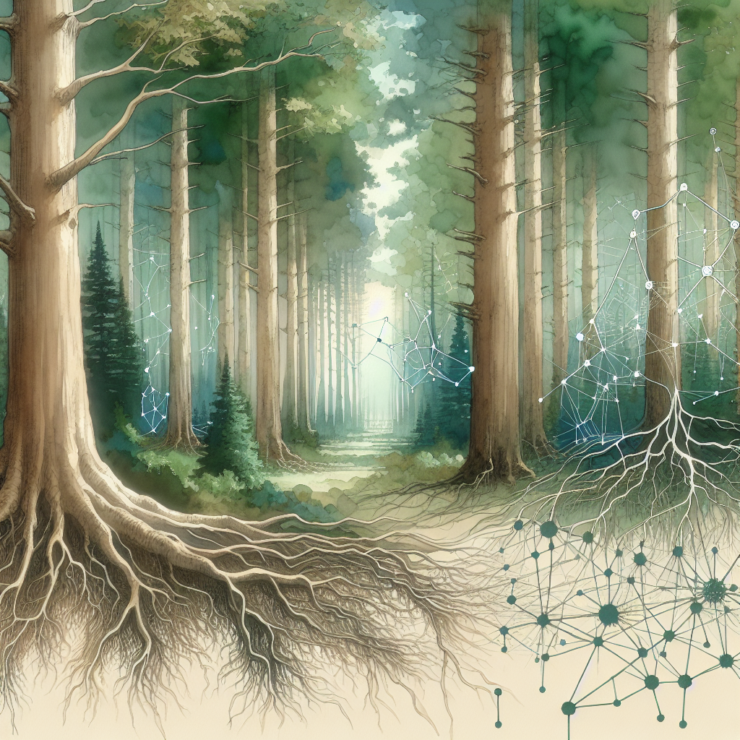Have you ever wandered through a forest and felt as if the trees around you were alive, whispering secrets to each other? It turns out, in a way, they are. Scientists have discovered that trees communicate with each other through a fascinating network often referred to as the “Wood Wide Web.”
This network is made possible by a symbiotic relationship between tree roots and fungi, known as mycorrhizae. The fungi connect the roots of different trees, creating an underground network where trees can share water and nutrients and even send warning signals about environmental stress or threats from pests.((https://www.smithsonianmag.com/science-nature/the-whispering-trees-180968084/)).
Researchers have discovered that trees can perform astonishing acts of cooperation and support through this network. For example, older trees, often called “mother trees,” can distribute resources to younger trees, helping them to grow. This includes essential nutrients and can extend to warnings about insect attacks, allowing other trees to boost their defenses.((https://silvotherapy.co.uk/articles/the-wood-wide-web))
Recent research questions the extent of these fungal networks, showing that while fungi are crucial for nutrient exchange, the actual sharing between trees might be less significant. The need for further study is emphasized to clarify the roles and impacts of these fungal networks.((https://theconversation.com/do-trees-really-stay-in-touch-via-a-wood-wide-web-heres-what-the-evidence-says-199806))
While the idea of plants communicating and sharing resources through mycorrhizal fungi (“wood-wide web”) may have been exaggerated, evidence supports some level of interaction. Experiments have shown that fungi can transmit defensive signals and move substances like carbon and water between plants under certain conditions. However, these findings don’t conclusively prove the existence of a widespread network facilitating significant resource sharing in natural environments. Despite this, the concept is valuable for raising awareness about the crucial role of soil fungi in ecosystems and encouraging more research and better management practices to protect these vital soil communities.
A complex chemical, hormonal, and electrical signaling system is at the heart of this communication. When a tree is under attack, it can send out chemical distress signals through its roots, which are picked up by neighboring trees. In response, these trees might release toxic substances to deter the threat or attract the predator’s enemies1.
However, experts reviewing this “wood wide web” idea found the evidence is mixed and often overstated, with many claims lacking strong support from scientific research.((https://undark.org/2023/05/25/where-the-wood-wide-web-narrative-went-wrong/))
Let this knowledge inspire us to consider the relationships and connections in our world. Just like the forest’s network of communication and support, we, too, can work together to nurture and protect our environment. This revelation about the secret language of trees shows us that even in silence, a profound dialogue is happening, one that sustains life in incredible ways.






































Add comment